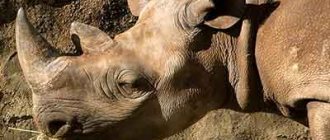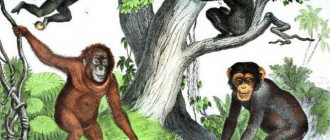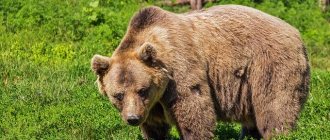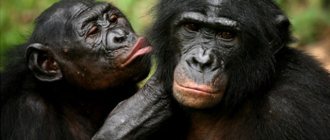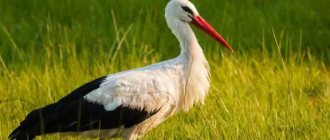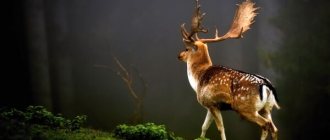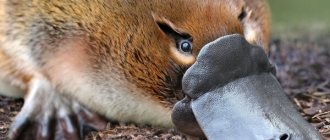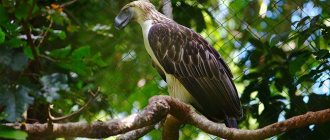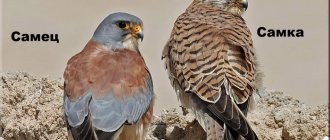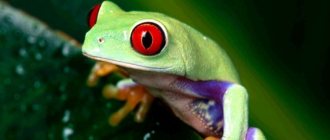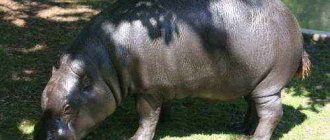Monkeys are four-armed mammals from the order of primates. The first representatives of the order appeared on the planet about 75 million years ago.
In the biological classification, all species of monkeys are divided into two orders: lower and higher primates. The lower primates, or prosimians, include lemurs and lorisiformes. In some classifications, tarsiers are also considered prosimians. Greater primates are divided into two large geographically isolated groups: broad-nosed apes and narrow-nosed apes. The second group includes great apes.
Classification
- Domain: Eukaryotes;
- Kingdom: Animals;
- Phylum: Chordata;
- Class: Mammals;
- Order: Primates.
The primate order is divided into two suborders and 16 families:
The suborder Strepsirrhini includes the following families:
- Dwarf lemurs (Cheirogaleidae);
- Lemuridae;
- Lepilemuridae;
- Indriae (Indridae);
- Arms (Daubentoniidae);
- Loriaceae (Loridae);
- Galagodae (Galagonidae).
The suborder Haplorrhini consists of the following families:
- Tarsiers (Tarsiidae);
- Marmosets (Callitrichidae);
- Grain-tailed monkeys (Cebidae);
- Night monkeys (Aotidae);
- Sacaceae (Pitheciidae);
- Spider monkeys (Atelidae);
- Monkeys (Cercopithecidae);
- Gibbons (Hylobatidae);
- Hominids (Hominidae).
What do they eat?
The monkeys' diet consists of plant foods: fruits of fruit trees, berries, leaves, juicy tubers. Some primates can eat insects, worms and other small invertebrates.
In langurs and other thin-bodied monkeys that eat hard leaves, the stomach is structured in the same way as in ruminant mammals: it has several partitions that divide the internal space into sections for more thorough digestion of plant food.
RHINOCEROS
Description
Roxellana rhinopithecus
Despite the marked differences between the primate families, they share several anatomical and functional characteristics that reflect their common order. Relative to body weight, the primate brain is larger than that of other land mammals and has a unique spur-like groove that separates the first and second visual areas on each side of the brain. While all other mammals have claws or hooves on their toes, primates have flat nails. Some primates have claws, but the big toe still has a flat nail.
Not all primates have equally dexterous hands; only monkeys (marmosets and hominids, including humans) and some lemurs and lorises have an opposable thumb. Primates are not the only animals that grasp various objects with their limbs. But since this characteristic is found in many other arboreal mammals (such as squirrels and opossums), and since most modern primates are arboreal, it is assumed that they evolved from an ancestor that was arboreal.
Primates also have specialized nerve endings on their limbs that increase tactile sensitivity. As far as is known, no other placental mammal has them. Primates have fingerprints, but so do many other arboreal mammals.
Primates have binocular vision, although this feature is by no means limited to primates, but is a common characteristic seen among carnivores. Therefore, it has been proposed that the ancestor of primates was a predator.
Primate teeth differ from those of other mammals, with low, rounded molar and premolar teeth that contrast with the long, sharp teeth of other placental mammals. This distinction allows fossils of primate teeth to be easily recognized.
Evolution
Primates are the oldest group of placental mammals. With the help of the remains, it was possible to study their evolution over 90 million years, it was then that apes were divided into primates and woolly wings.
After 5 million years, two new groups formed: dry-nosed and wet-nosed primates. Then the tarsiforms, apes, and lemurs appeared.
Global cooling, which occurred 30 million years ago, led to the mass extinction of primates; representatives remained only in Africa, America and Asia. Then the first true ancestors of modern primates began to appear.
Evolution of primates
These animals lived in trees and ate insects. From them came orangutans, gibbons, and dryopithecus. The latter are an extinct group of primates that evolved into other species: chimpanzees, gorilla, humans.
The opinion of scientists that man descended from dryopitens is based on many similarities in structure and appearance. Upright walking is the main feature that first separated humans from primates during evolution.
| Similarities between humans and primates | |
| Similarities | Characteristic |
| Appearance | Large size, long limbs with the same structure plan (five-fingered, the first finger is opposed to the rest), similar shape of the outer ear, nose, facial muscles, nail plates |
| Internal skeleton | 12-13 pairs of ribs, similar sections, same bone structure |
| Blood | One cellular composition, four blood groups |
| Chromosome set | Number of chromosomes from 46 to 48, similar shape and structure |
| Metabolic processes | Dependence on enzyme systems, hormones, identical mechanisms of breakdown of nutrients |
| Diseases | Tuberculosis, diphtheria, measles, polio have the same course |
Size
Members of the primate order exhibit a range of size and adaptive diversity. The smallest primate is the mouse lemur (Microcebus berthae), an endemic animal of Madagascar, which weighs about 35-50 grams; the most massive primate is, of course, the gorilla, whose weight varies from 140 to 180 kg, which is almost 4000 times the weight of the mouse lemur.
Geographical range and habitat
Primates occupy two main vegetation zones: tropical forests and savannas. Each of these zones created corresponding adaptations in primates, but among arboreal species there is probably more diversity in bodily forms than among savanna inhabitants. Arboreal primates have many of the characteristics that likely evolved as adaptations to life in the trees. Several species, including our own, have left trees and become terrestrial.
Non-human primates have a wide distribution throughout tropical latitudes of Africa, India, Southeast Asia and South America. In Ethiopia, the gelada (genus Theropithecus) is found at altitudes of up to 5,000 meters. The gorillas of the Virunga Mountains are known to pass through mountain passes at altitudes of over 4,200 meters. The tawny howler monkey (Alouatta seniculus) of Venezuela lives at an altitude of 2,500 meters in the mountains of the Cordillera de Mérida, while in northern Colombia the miriquins (genus Aotus) are found in the tropical montane forests of the Cordillera Central.
Primate habitats are predominantly tropical, but several species of non-human primates extend their ranges well beyond the tropics. The Barbary monkey (Macaca sylvanus) lives in the temperate forests of the Atlas and other mountain ranges of Morocco and Algeria. One of the most remarkable species is the Japanese macaque (M. fuscata), which lives in the mountains covered with snow for eight months in northern Honshu; Some populations have learned to make their lives more comfortable by spending most of the day in the hot springs that bubble and form pools in volcanic areas. Finally, two species of Chinese monkeys, Rhinopithecus roxellanae and black rhinopithecus (R. bieti), are restricted to altitudinal areas (up to 3000 meters for the former and up to 4500 meters for the latter) where temperatures drop below 0°C every night and rarely rises much above this level during the day.
Where do they live?
The modern range of all primate species, with the exception of humans, extends to the tropics and subtropics of the African continent, Asia, South and North America. Paleontological studies indicate that some species of monkeys lived in Europe in ancient times.
HIPPOPOTAMUS
Where live
Broad-nosed monkeys inhabit central and equatorial America. Since all representatives of the group belong to arboreal species, their usual habitats are dry and moist tropical forests.
Narrow-nosed monkeys are distributed throughout almost the entire territory of Africa except desert regions, as well as in the south of the Arabian Peninsula and Asia. The group includes both arboreal and terrestrial species, so their habitat is much wider and also includes subtropical forests, woody and grassy savannas.
Nutrition
The diet of primates depends on their habitat, body size, and the development of teeth, jaws, and digestive systems. Their diet can be divided into: plants (vegetables, fruits, flowers, leaves, nuts, bark, roots, seeds, herbs, stems, etc.) and animals (birds, lizards, small rodents, bats, insects, frogs and crustaceans).
Gulmans prefer leaves. Hominoids (except mountain gorillas) eat fruit. Many of the smaller nocturnal species, such as galagos, dwarf lemurs, lapilemurs, Madagascar bats and slender lorises, are insectivores. Tarsiers are probably the only primates that are exclusively carnivores, feeding on insects, lizards and snakes. Lemurs have a more vegetarian diet consisting of fruits, seeds and leaves.
Enemies of monkeys in nature
Representatives of large species have practically no natural enemies. Some individuals die during skirmishes between neighboring flocks. Sometimes large monkeys become victims of attacks by cats: leopards, jaguars, tigers or lions.
Smaller animals from the order of primates can be attacked by large snakes (boas and pythons), as well as crocodiles. Birds of prey pose a danger to small monkeys: the monkey-eating harpy (Philippine eagle), hawks and kites.
Like many other animals, primates suffer from various diseases, including fatal ones. According to confirmed information, in 2002-2004, more than 5,000 gorillas and chimpanzees died as a result of infection with the Ebola virus. The most dangerous diseases for monkeys include rabies, tuberculosis, monkeypox, and yellow fever.
CROCODILE
Reproduction
The main reproductive events in the life of primates are: copulation, pregnancy, birth and lactation. The female usually does not become physiologically receptive until the calf from a previous pregnancy has been weaned from its mother's milk.
In captivity, breeding seasons can occur at any time of the year. In the wild, they are closely related to the prevailing environmental conditions.
The gestation period varies among primate species. For example, mouse lemurs have a gestation period of 54–68 days, lemurs 132–134 days, macaques 146–186 days, gibbons 210 days, chimpanzees 230 days, gorillas 255 days, and humans (on average) 267 days. Even in small primates, the gestation period is significantly longer than in other mammals of equivalent size, reflecting the complexity of primates. Although there is a general evolutionary tendency for primates to increase body size, there is no absolute correlation between body size and the length of the gestation period.
The degrees of puberty and maternal dependence at birth are obviously closely related. Newborn primates are not as helpless as kittens, puppies or rats. With a few exceptions, the young primate is born with its eyes and fur open. The cubs must be able to cling to their mother's fur; only a few species leave their babies in shelters while feeding. The cubs of the highest primates are able to cling to their mother's fur without outside help; however, humans, chimpanzees, and gorillas must support their newborns, and humans do so the longest.
Once the primate infant has learned to support itself by standing on its own two (or four) legs, the physical dependency phase is over; the next stage, psychological dependence, lasts much longer. The human child is attached to its mother for a much longer time than the non-human primate. The teenage period of psychological maternal dependence is 2.5 years in lemurs, 6 years in monkeys, 7-8 years in most hominoids and 14 years in humans.
Chimpanzee conservation
Chimpanzees need conservation measures as they are on the verge of extinction. Unfortunately, they live in the vastness of Africa, where few countries can afford to invest in protecting the monkeys. It is worth noting the fact that some countries are making great efforts to create protected areas, as well as tightening legislation in relation to poaching. Unfortunately, some countries take no action at all.
In connection with these facts, we have to agree with the conclusion that the protection of chimpanzees is insufficient, therefore the number of these monkeys is constantly decreasing.
Chimpanzees are of particular interest for scientists to study their life activities. Therefore, they are interested in ensuring that chimpanzees never disappear from the face of our Planet.
Secrets of chimpanzees. Documentary
Behavior
Primates are among the most social animals, forming pairs or family groups. Social systems are influenced by three major ecological factors: biological resource distribution, group size, and predation. Within a social group there is a balance between cooperation and competition. Cooperative behavior includes social grooming, food sharing, and collective defense against predators. Aggressive behavior often signals competition for food, bedding or mates. Aggression is also used to establish dominance hierarchies.
It is known that several species of primates can cooperate in the wild. For example, in Tai National Park in Africa, several species coordinate behavior to protect themselves from predators. These include Diana's marmoset, Campbell's marmoset, small white-nosed marmoset, red colobus, royal colobus, and smoky mangabey. Among the predators of these monkeys is the common chimpanzee.
Primates have developed cognitive abilities: some make tools and use them for food and for social display; others have complex hunting strategies that require cooperation, influence, and primacy; they are status conscious, manipulative and capable of deception; these animals can learn to use symbols and understand human language.
Some primates rely on olfactory cues for many aspects of social and reproductive behavior. Specialized glands are used to mark territories with pheromones, which are picked up by the vomeronasal organ. Primates also use vocalizations, gestures, and emotions to convey psychological states. Like humans, chimpanzees can distinguish between the faces of familiar and unfamiliar people.
Interesting facts about monkeys
- The slow loris is the only venomous primate. The toxic substance is secreted by glands located on the forelimbs. Lori takes the gland secretion into her mouth and mixes it with saliva. Subsequently, the animal either smears the poisonous saliva on its head to scare away enemies, or holds it in its mouth, making painful and dangerous bites. The substances contained in the secretion can cause suffocation in large animals and even in humans.
- Chimpanzees, gorillas and orangutans have the highest intelligence among monkeys. The vocal apparatus of these animals is not capable of producing sounds similar to human speech, but they can exchange information using gestures and symbols. One of the most successful monkey learning experiments was conducted by scientists at Stanford University. The female gorilla Koko had about a thousand Amslen (American language of the deaf) gestures in her vocabulary, and she learned to express emotions and use some abstract concepts in communication.
- Primates look after their offspring much longer than other animals. In some species of monkeys, even mature and completely independent young animals continue to remain under the supervision of their parents. For example, among bonobo pygmy chimpanzees, adult females look for partners for their grown male cubs.
- Some species of primates can pose a threat to humans. According to primatologists, the most aggressive monkeys belong to the genus of baboons. Hamadryas, anubises, baboons and bear baboons, which are not gigantic in size, can inflict quite serious wounds with their sharp and long fangs.
- The pig-tailed macaques, which live on the islands of Sumatra and Kalimantan, are used by the local population for harvesting: the animals climb palm trees and drop coconuts from there, carefully choosing only ripe fruits.
- The color of exposed skin in some species of monkeys can tell about the animal's emotional mood or state of health. In baboons, this indicator is the ischial calluses, and in the bald uakari, the completely hairless front of the head.
